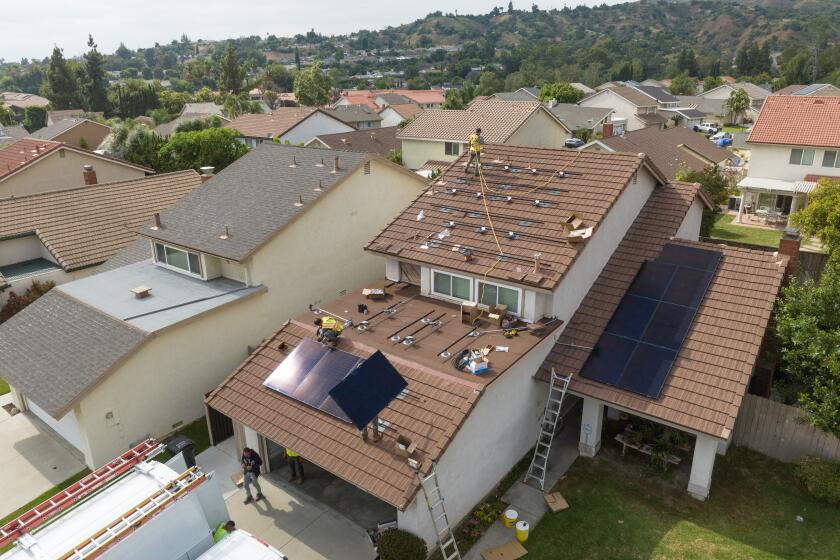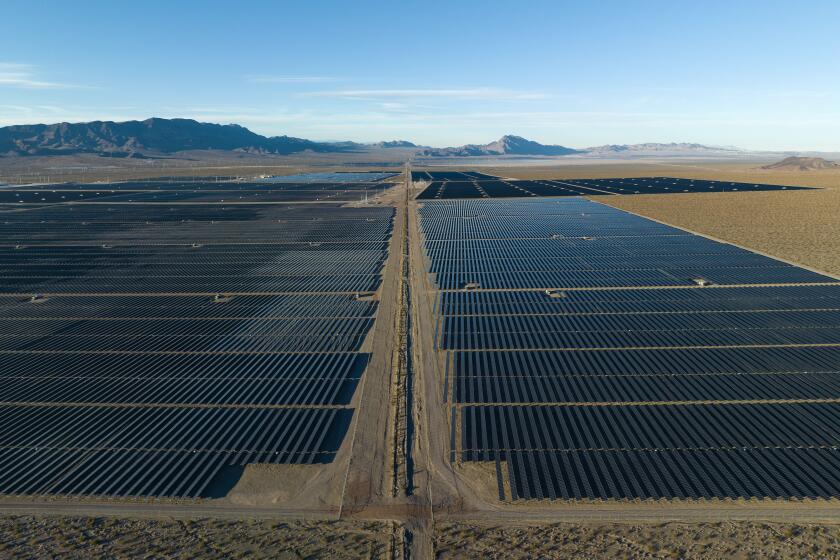Column: California strikes another blow against rooftop solar
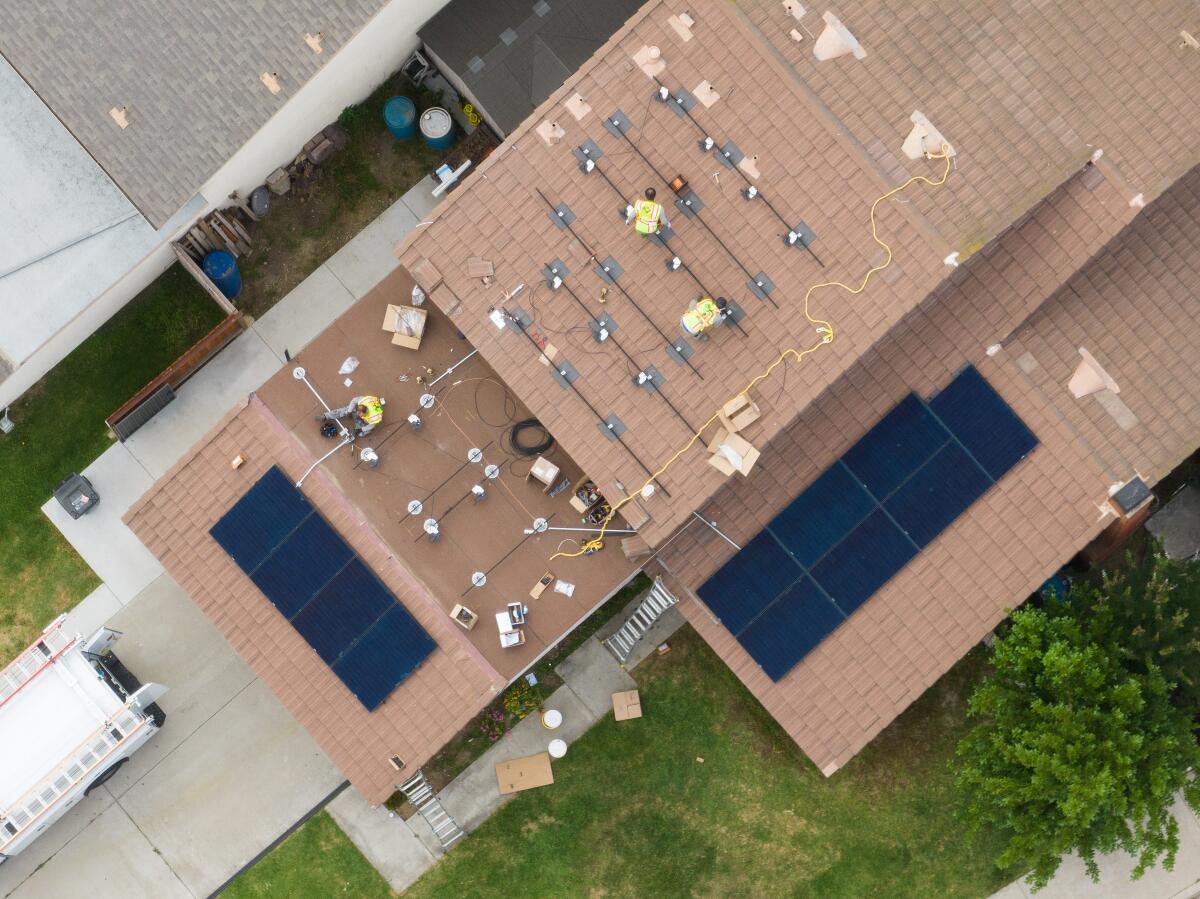
Just a few weeks after Gov. Gavin Newsom returned from a trip to China that he claimed was focused on tackling the climate crisis, his appointees back home voted to slash financial incentives for rooftop solar power — for the second time.
Thursday’s 5-0 vote by the California Public Utilities Commission will make solar panels less economically enticing for apartment dwellers, farmers, schools and strip malls, solar companies say. The commission approved similarly dramatic solar incentive cuts for single-family homes in December — a decision the industry says has prompted a steep drop-off in sales.
It’s a disappointing turn of events, especially considering how much value we’ve gotten from rooftop solar so far.
California has more than 1.8 million solar systems at homes and businesses. They generate about 11% of the state’s electricity, helping limit our combustion of the fossil fuels destabilizing Earth’s climate and filling the air with deadly chemicals.
But critics insist the costs of those solar panels are beginning to outweigh the benefits.
And community solar, too, for those of us who don’t own our roofs.
Incentive payments to homes with solar, they say, have led to higher electricity rates for everyone else — including families that can’t afford rooftop panels. If so, that’s not only unfair, it’s damaging to the state’s climate progress. Higher electricity rates make it less likely that people will drive electric cars and install electric heat pumps in their homes — crucial climate solutions.
The solar industry disputes the argument that solar incentive payments are driving up rates, as do many environmental activists. But Newsom’s appointees to the Public Utilities Commission are convinced, as they made clear Thursday.
“We need to reach our [climate] goals as fast as we can,” said Alice Reynolds, the commission’s president. “But we also need to be extremely thoughtful about how we reach our climate change goals in the most cost-effective manner.”
You're reading Boiling Point
Sammy Roth gets you up to speed on climate change, energy and the environment. Sign up to get it in your inbox twice a week.
You may occasionally receive promotional content from the Los Angeles Times.
Thursday’s decision — which applies only to customers of Southern California Edison, Pacific Gas & Electric and San Diego Gas & Electric, and doesn’t affect utility customers who already have rooftop solar — is less detrimental to apartment renters and other prospective solar generators than an earlier proposal floated by the agency.
Under the earlier proposal, renters whose landlords installed solar would have had to pay full retail rates for all the electricity they used — even when their building’s solar panels were generating enough power to cover their consumption.
That’s no longer the case. Renters will now be able to reduce or cancel out their utility payments when the sun is shining.
But in a holdover from the earlier plan, renters will be paid much less than they are today for electricity generated by their rooftop panels above and beyond what they and their neighbors use — electricity that is sent to the larger power grid, helping the rest of us keep the lights on. Solar companies say that change will lead to far fewer installations.
“They didn’t even meet us halfway,” said Bernadette Del Chiaro, executive director of the California Solar & Storage Assn.

In some ways, the dispute over rooftop solar incentives — which has been raging in California for a decade — is just one of many debates over how to confront the climate crisis without creating other problems.
Massive solar farms in the desert? Electric vehicles in our garages? Gas-free stoves in our kitchens? They’ve all got benefits and drawbacks, supporters and detractors. As I’ve written previously, there’s no such thing as a perfect climate change solution.
But the idea of cutting support for rooftop solar is especially galling to much of the environmental movement.
They need to start working together to solve the climate crisis. A new agreement could be the first step.
Solar panels on homes and businesses do more than displace polluting coal and gas plants — they limit our reliance on profit-hungry utility monopolies such as Edison and PG&E, and on an electric grid increasingly battered by climate-fueled storms and fires. They also reduce the need for sprawling solar projects that can chew up wildlife habitat and precious public lands.
The popularity of rooftop solar was on full display before Thursday’s Public Utilities Commission vote when more than two dozen people weighed in during public comments. All of the speakers urged the agency not to cut incentives.
Many focused on the fact that unlike apartment renters, other utility customers affected by the decision — including schools and farms — will still have to pay full retail rates for all the electricity they consume. Even if they install solar panels that cover some of their consumption, they’ll have to pay their utility for power during times of day when their panels are generating.
Under the new rules, “schools will not be permitted to generate their own power any longer. Instead, they’ll be forced to buy their own solar back from utilities at full price,” said Sasha Horwitz, a legislative advocate at the Los Angeles Unified School District. He said the changes would make it harder for the school district to achieve its 100% clean energy goal, “hurting our ability to reduce emissions, electrify our schools and invest in safe, healthy learning environments for our children.”
“These unfair practices help utility companies and harm students,” he said.
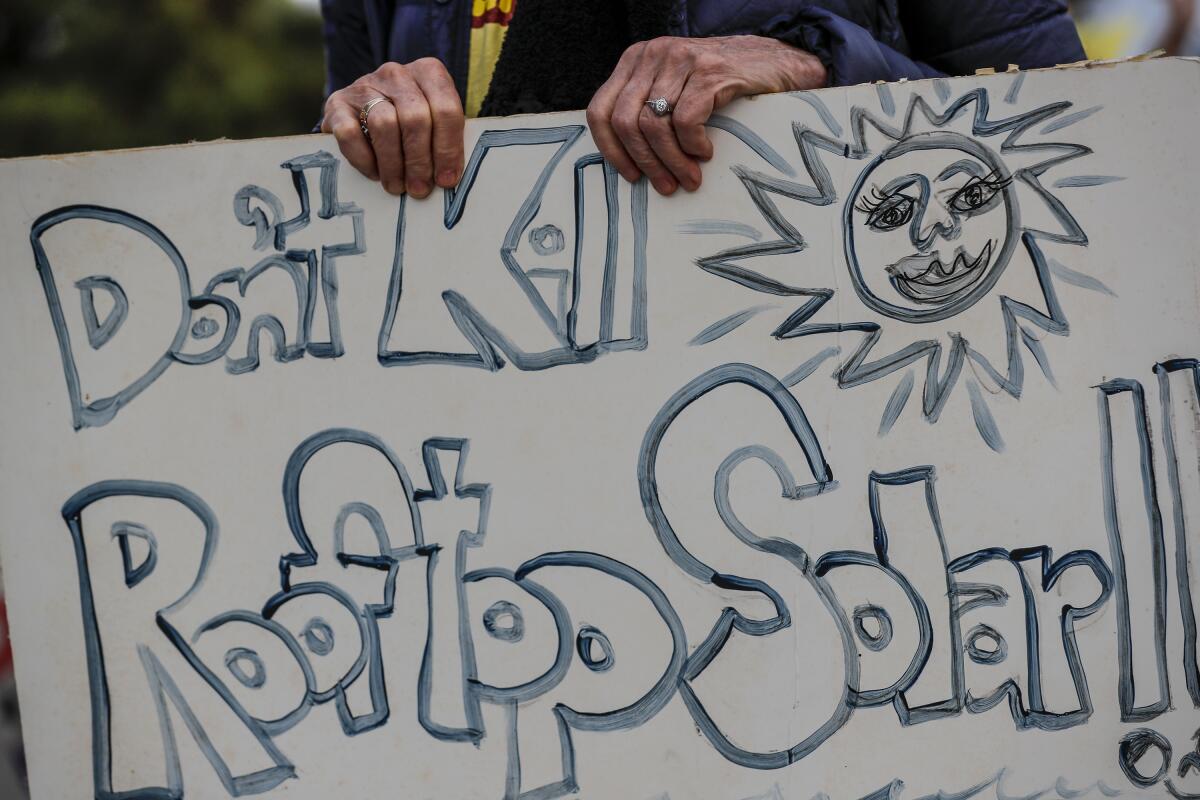
On the other side of the argument are consumer watchdog organizations such as the Utility Reform Network; a handful of environmental advocacy groups, including the Natural Resources Defense Council; and California’s big investor-owned utilities, namely Edison, PG&E and SDG&E. They all say there’s no doubt rooftop solar incentives have fueled higher electricity rates.
Utility critics believe the power companies are acting out of a desire to maintain their profit margins. But it’s hard to ignore the voices of respected ratepayer watchdogs and prominent environmental activists, even a relatively small number of them.
Those groups make the case that large solar farms produce electricity at a far lower cost than rooftop panels. They also note that California has so many solar panels that it increasingly produces more energy than it needs on sunny afternoons. The incentive cuts approved by state officials over the last year, they say, may result in fewer standalone solar installations but should lead to more solar systems paired with batteries — crucial tools for keeping the lights on during hot summer evenings.
Newsom’s appointees to the Public Utilities Commission echoed those points Thursday. Reynolds spent several minutes listing other state programs that can help schools and farms in particular reduce their planet-warming carbon emissions.
“This decision has nothing to do with slowing down on climate change,” Reynolds said.
I could go into a lot more detail on the details of the agency’s decision. But frankly, I’m sick of this debate.
I first wrote about the controversial “net metering” solar incentive program nearly a decade ago. The arguments for and against are essentially the same today as they were then. There’s been no consensus reached, no meeting of the minds.
If you care about limiting global warming, that’s a problem. Because time is short.
Extreme heat is already killing thousands of people in the U.S. each year. October was the planet’s fifth straight month of record temperatures. California’s treasured coastline is vanishing. And scientists say we’re moving way too slowly to slash the pollution driving these changes — pollution that is especially harmful in low-income communities of color.

Rooftop solar alone won’t be enough to solve our problems, according to even the most optimistic scientists. We’ll need lots of imperfect climate change solutions, from solar farms that gobble up wildlife habitat to electric cars whose batteries can’t yet take us as far as gasoline engines to induction stoves that some chefs consider inferior to cooking with gas.
But in every study I’ve seen that explores how to stop burning fossil fuels, rooftop solar plays a major role. Even Edison’s latest vision for 100% clean energy assumes the amount of small-scale solar on California’s power grid will eventually double.
So how do we get to that point? How do we stop arguing about the costs and benefits of complicated incentive programs and start working together to rapidly expand the numbers of homes, businesses and parking lots covered with solar panels?
Matt Baker has some ideas.
Baker leads the Public Advocates Office, an independent watchdog arm of the Public Utilities Commission. He supported the incentive cuts approved Thursday, saying they would help keep utility bills from rising too high for families without solar.
But when we spoke this week, Baker surprised me by saying he expects we’ll eventually put solar on “every rooftop and parking lot that we possibly can.” For him, the question is how to encourage the technology in a way that’s fair to everyone.
Right now, Baker said, California is “addicted” to solar incentives paid for by utility customers through their electric rates. That’s how net metering has always worked, and it’s been easy for politicians to get behind because it doesn’t require them to allocate taxpayer funds in the state budget. They can just let the Public Utilities Commission stick utility customers with the bill.
In an ideal universe, Baker said, state lawmakers would approve robust upfront rebates for rooftop solar installations — with an emphasis on solar for low-income families. Then we wouldn’t have to worry so much about rising electricity rates.
“We want a subsidy regime that is as equitable as possible,” Baker said.
That’s absolutely what we want. But we can’t let the perfect be the enemy of the necessary.
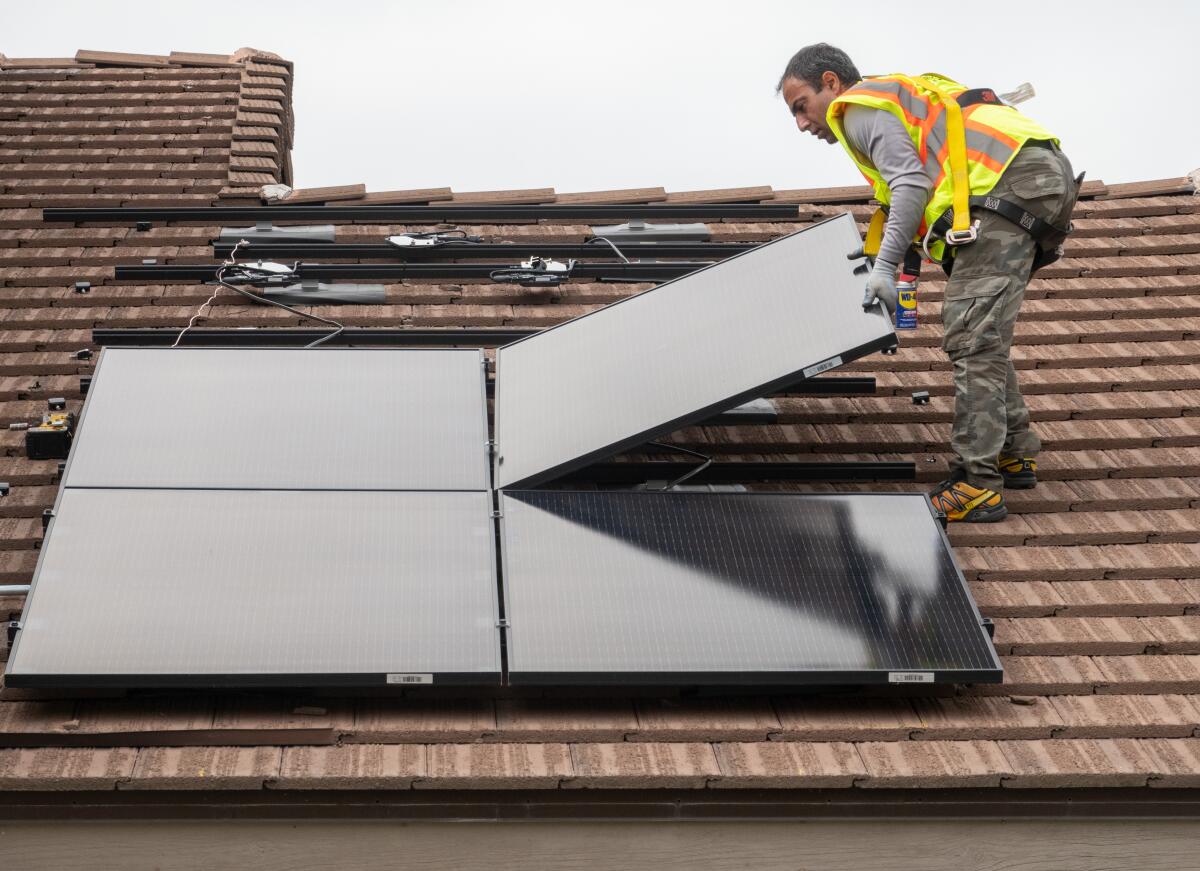
As much as I’d love to wait and see if we can stop arguing and start coming to agreement on the best possible climate solutions, I’m terrified thinking about all the coal, oil and gas we’d burn in the interim. Scientists say we need to cut heat-trapping carbon pollution nearly in half by 2030, just seven years from now, to avoid a future of far deadlier heat waves, storms, droughts and fires than the ones we’re experiencing today. That’s daunting as hell.
So, yes, it would be great to transition to a solar incentive system like the one outlined by Baker — a system that’s funded by the state budget and doesn’t raise the specter of higher electric rates. But so far, I’ve seen zero political momentum for that.
Instead, all state officials have done is slashed solar incentives. In an era of climate calamity, that’s inexcusable.
Why haven’t California’s climate-friendly Democratic lawmakers gone to bat for rooftop solar? It’s hard to know for sure, but the politically powerful organized labor movement may be to blame. Labor unions prefer large-scale solar farms, which are typically built by union workers. They’ve worked to undermine rooftop solar companies, most of which are nonunion.
The one person who might be able to reset the debate around rooftop solar is Newsom. He showed his willingness to go to bat for a controversial clean energy strategy last year when he cajoled the Legislature into passing a bill that allows solar and wind energy developers to go around local officials who might not approve their projects and instead seek approval from the state.
But the governor has thus far declined to make rooftop solar a priority, at least publicly.
When the Public Utilities Commission released its initial proposal to cut solar incentives for single-family homes two years ago, Newsom said at a news conference that “changes need to be made.” The governor’s office declined to comment on the smaller but still substantial cuts that the agency ultimately approved, outside of brief positive reference in a news release.
Since then, Newsom has stayed quiet on rooftop solar. His office declined to tell me where he stands on Thursday’s decision.
Whatever the governor’s reasons for staying out of this debate, his absence is disappointing.
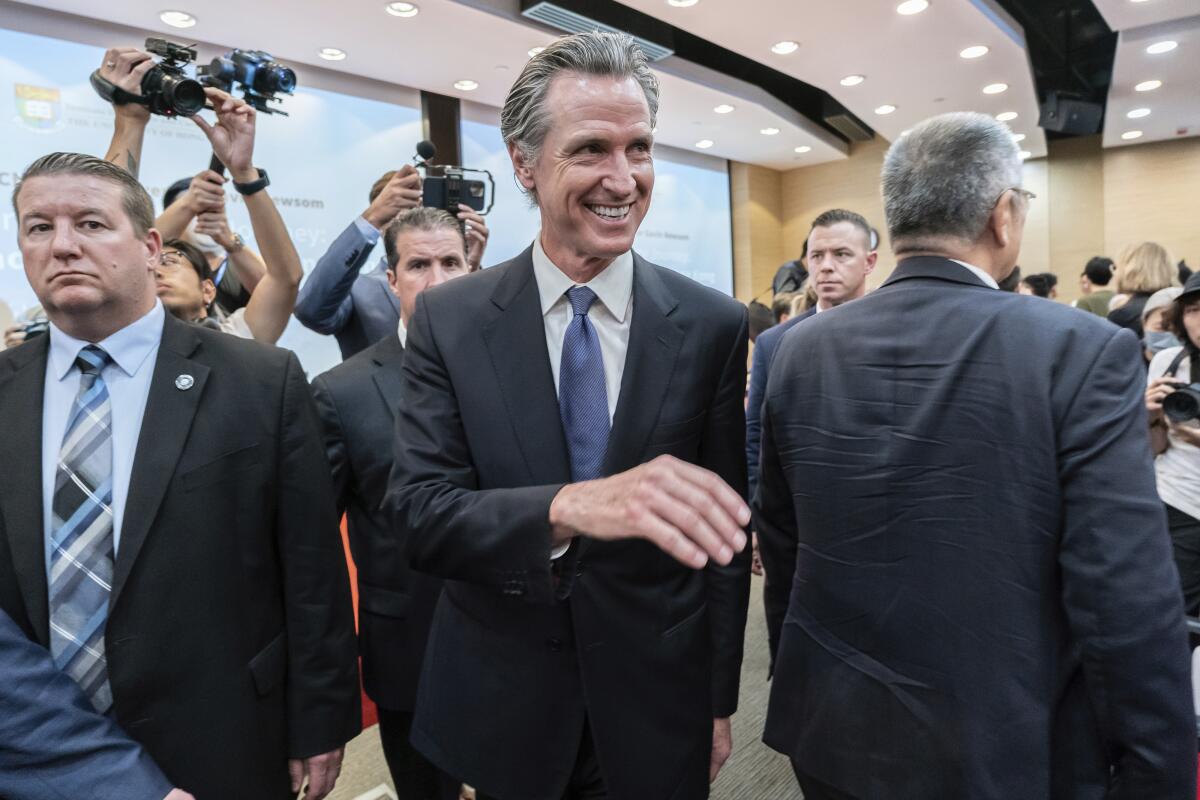
Newsom spokesperson Alex Stack did send me data showing the rooftop solar market has stayed strong this year, with nearly 219,000 systems installed by customers of Edison, PG&E and SDG&E through September — with enough systems left in the queue to match last year’s 251,000 installations. That’s encouraging, although solar installers say those numbers reflect a last-minute rush by single-family homes to secure higher incentives before net metering cuts took effect in April.
I expect next year’s numbers to be lower. I hope I’m wrong.
In the absence of Newsom’s support, the rooftop solar industry’s best hope for a quick rebound might be a lawsuit filed by the Center for Biological Diversity, Environmental Working Group and Protect Our Communities Foundation seeking to overturn last year’s decision slashing incentives for single-family homes. A state appeals court will hear oral arguments next month.
I’ll listen to those arguments and let you know what happens.
I’ll also keep writing about all the other imperfect climate solutions. Because as much as I wish we could fix everything with one technology or policy or lifestyle change, we can’t. Global warming is too daunting. We burn way too much fossil fuel.
The more time we waste arguing about the best way to stop, the more trouble we’ll be in.
ONE MORE THING
I’m still looking for short write-ups from Boiling Point readers about what gives them hope, to be featured in the Thanksgiving Day edition of the newsletter. If you want to contribute, please fill out this survey with roughly 100 to 150 words about what keeps you hopeful amid the climate chaos, along with your name and where you live. If you can include a photo, even better.
Thank you to everyone who has contributed so far.
This column is the latest edition of Boiling Point, an email newsletter about climate change and the environment in California and the American West. You can sign up for Boiling Point here. And for more climate and environment news, follow @Sammy Roth on Twitter.
Toward a more sustainable California
Get Boiling Point, our newsletter exploring climate change, energy and the environment, and become part of the conversation — and the solution.
You may occasionally receive promotional content from the Los Angeles Times.
